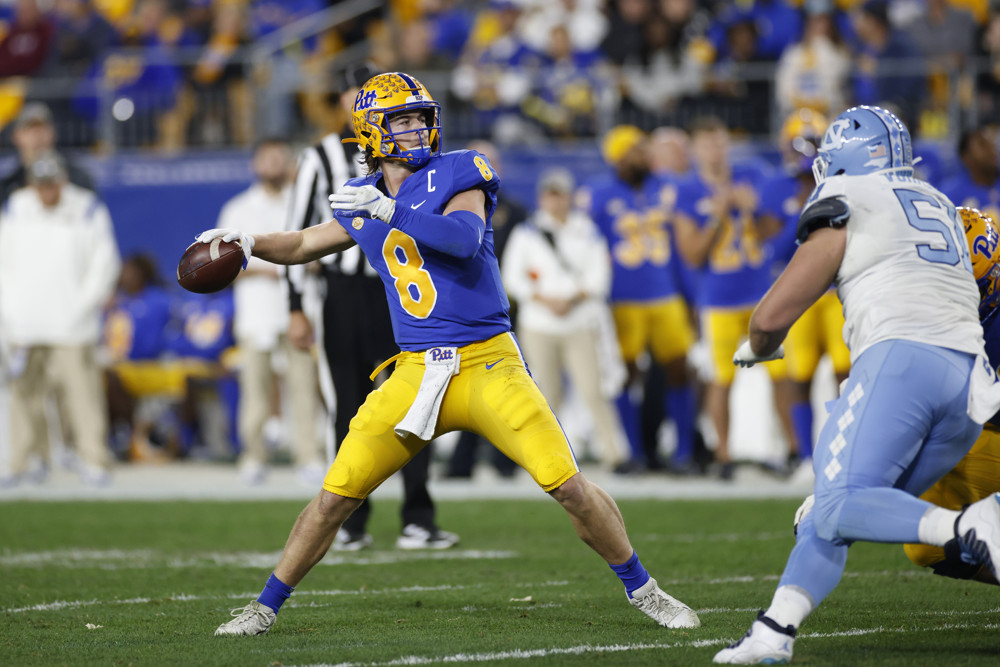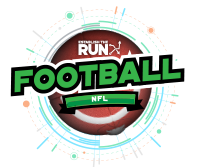Quarterback is an extremely polarizing position in fantasy football. In 2-QB or Superflex formats, they are absolute gold. Eight of the top 12 players in our Superflex dynasty rankings are QBs. In single-QB formats, you can largely ignore the position. Our first signal caller doesn’t show up until 70 overall. But regardless of the format, we should still be targeting the following for dynasty:
1. Elite production — In 2021 Yahoo! scoring, QB1 and QB13 were separated by 6.6 fantasy points per game. QB13 and QB32 were separated by just 3.9 points. Even in Superflex leagues, startable production can be fairly deep within individual seasons. The top options are still the guys who win you leagues.
2. Fast production — Burning roster spots with players who aren’t producing can be a painful use of dynasty roster space. That is compounded when it is at QB. In single-QB leagues, there isn’t really much use in carrying a QB who can’t even spot start for your team. In Superflex, you want two starters at all times. Patience is typically not something you can afford.
With that in mind, here’s what you should be looking for in QB prospects, as well as some relevant information you can expect to see in our player profiles. One thing worth keeping in mind while reading is that the sample sizes for QBs — both in terms of the number of prospects and number of successes — are small. These are data-based leans, but we should feel less confident in them than for WR or RB. We also likely want to pay more attention to what the scouts are saying as a result.
Draft Position
Draft position has been a key piece when looking at all positions, but it is especially critical when looking at QBs. Players selected outside of the first round rarely get extended opportunities to start, and it is reflected directly in the results. There were 41 unique QB1 performers (minimum eight games) from 2012 to 2021. 68% of them were first-round picks, and 83% were drafted within the first three rounds.
This relationship also exists at the prospect level. Using our database of QB prospects dating back to 2005, we can see how often players succeeded at the NFL level. If we consider a “hit” to be a prospect who averaged at least 20 points per game (Yahoo! scoring) within three seasons, these are the respective hit rates by day of the draft.
Day 1 — 29%
Day 2 — 10%
Day 3 and UDFA — 0%
We should not be giving much consideration in dynasty and rookie drafts to QBs drafted outside of Round 1, and almost none whatsoever to players who aren’t off the board by the end of Round 3. Narrowing our view from the start to avoid potential “sexy” late-round landmines can help deploy dynasty draft capital more efficiently.
Age and Experience
This finding was a bit surprising given the emergence of Joe Burrow in 2021, but age and experience were highly predictive at the QB position. Age in particular seemed quite strong, giving us two main buckets to look at based on final season age and hit rate. Default percentages will be for Day 1 and 2 picks given the previous findings.
20 or 21 years old — 36% (40% in Round 1)
22 or older — 9% (11% in Round 1)
Truly, prospects like Burrow are quite rare. In general, we should be targeting prospects on the younger end of the spectrum. This is reflected in player experience as well. Again, we have two main buckets for hit rate.
Three- or four-year players — 28% (34% in Round 1)
Five years or more — 8% (9% in Round 1)
The results aren’t quite as strong as for age, indicating that older three- and four-year prospects likely still don’t pan out. The data backs this up, as just two of 16 (13%) four-year prospects age 22 or older were hits.
Athletic Testing and Production
We don’t have breakout metrics for QBs, but there are still some meaningful production and testing thresholds that we want QB prospects to hit in order to have a high probability of success. The first deals with final-season adjusted yards per pass attempt, which is a variation on the easily-understandable yards per pass attempt that credits QBs for TDs and penalizes them for interceptions. Again, the default hit rate observed is for Day 1 and Day 2 picks.
9.0 AYA or better — 31% (36% in Round 1)
Lower than 9.0 AYA — 11% (19% in Round 1)
It isn’t terribly surprising that passing efficiency matters for QBs, but we know that what truly separates the elite fantasy QBs is an ability to run the ball as well. With that in mind, the next production metric that matters is adjusted QB yards per play. This statistic boils down a QB’s contributions to the number of yards contributed per each team play, and gives a 2x multiplier to rushing aka the money yards. The benefits of including rushing production become obvious when looking at the hit rates.
4.7 or more adjusted QB yards per play — 35% (48% in Round 1)
Less than 4.7 adjusted QB yards per play — 12% (14% in Round 1)
A simple way to observe the potential rushing upside of a QB prospect is by checking his forty-yard dash time. While players don’t always play to their timed speed, fast QBs certainly seem to be an edge in the dynasty QB market.
4.6 seconds or faster — 64% (67% in Round 1)
Slower than 4.6 seconds — 12% (20% in Round 1)
It is worth noting that the hit rates for the “other” group here are still manageable — especially in the first round. We should be looking to jump on QBs who are fast more than automatically striking out slower ones.
Statistics Glossary
You may see a variety of statistics referenced in our upcoming QB profiles. Here is the skinny on the most common ones you will see, along with abbreviations you may see for those stats.
Adjusted Yards Per Pass Attempt (pass_aya) — A variation on the easily-understandable yards per pass attempt that credits QBs for TDs and penalizes them for interceptions. The calculation is: (pass yards + 20*(pass TD) – 45*(interceptions thrown))/(passing attempts). Note that career-adjusted yards per pass attempt (c_pass_aya) is useful in finding comparable QBs.
Adjusted QB Yards Per Play (adj_qb_ypp) — Number of yards contributed by the QB per team play, with a 2x multiplier given to rushing yards. This is beneficial for QBs as it emphasizes the part of their game that will be more valuable for fantasy. Only includes games in which the player participated.
Passing Yards Per Play (pass_ypp) — Number of passing yards contributed per team play. Only includes games in which the player participated. This statistic is useful in finding comparable QBs.
Rushing Yards Per Play (rush_ypp) — Number of rushing yards contributed per team play. Only includes games in which the player participated. This statistic is useful in finding comparable QBs.
Strength of Schedule (sos) — Strength of the player’s team schedule as calculated by Sports Reference. This statistic is useful in finding comparable QBs.
Market Share of Rushing TDs (ms_rush_td) — The percentage of team rushing TDs a player accounts for. Only includes games in which he participated. This may give us some insight as to how useful a QB is around the goal line. This statistic is useful in finding comparable QBs.



